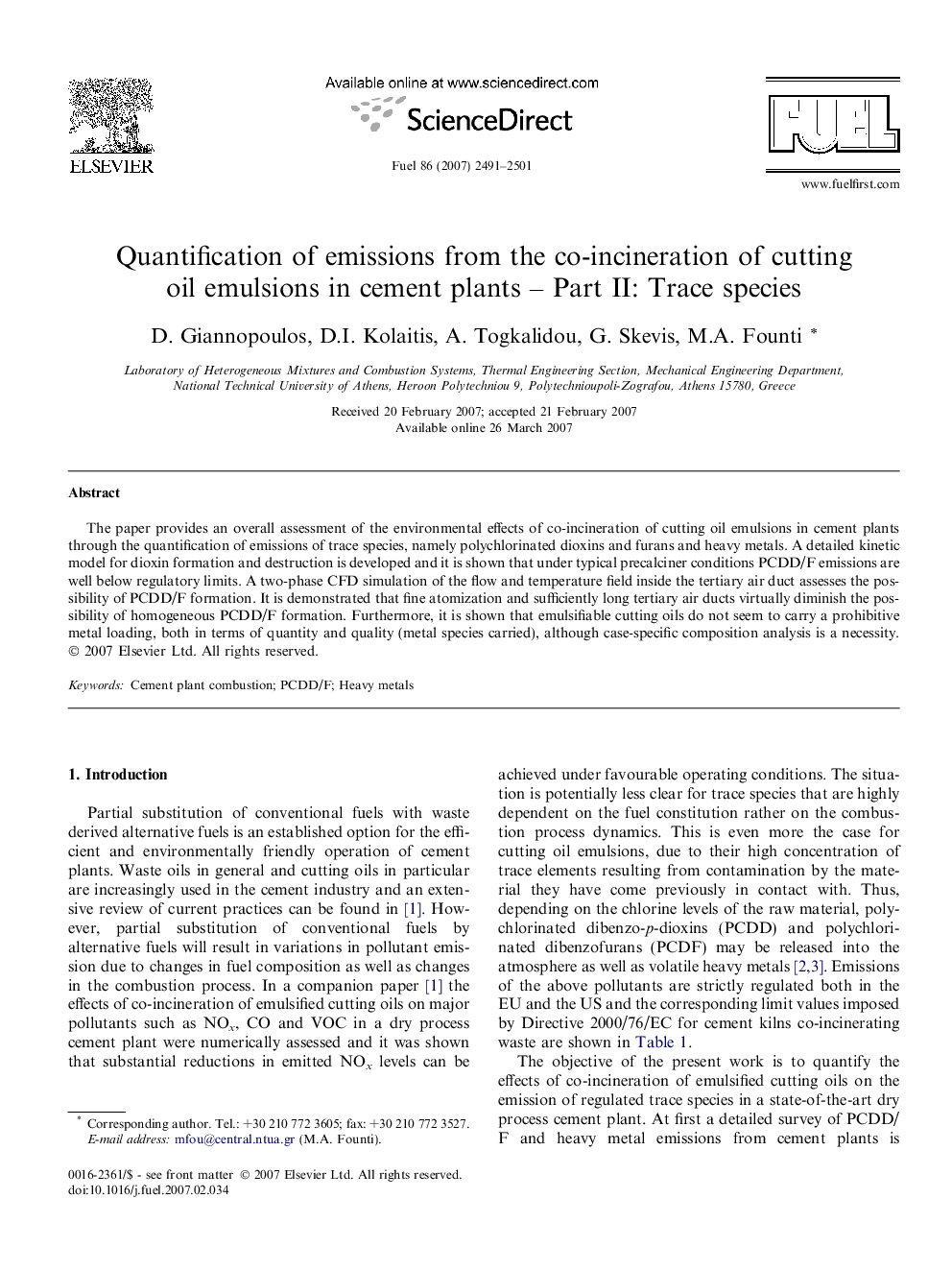| Article ID | Journal | Published Year | Pages | File Type |
|---|---|---|---|---|
| 208103 | Fuel | 2007 | 11 Pages |
The paper provides an overall assessment of the environmental effects of co-incineration of cutting oil emulsions in cement plants through the quantification of emissions of trace species, namely polychlorinated dioxins and furans and heavy metals. A detailed kinetic model for dioxin formation and destruction is developed and it is shown that under typical precalciner conditions PCDD/F emissions are well below regulatory limits. A two-phase CFD simulation of the flow and temperature field inside the tertiary air duct assesses the possibility of PCDD/F formation. It is demonstrated that fine atomization and sufficiently long tertiary air ducts virtually diminish the possibility of homogeneous PCDD/F formation. Furthermore, it is shown that emulsifiable cutting oils do not seem to carry a prohibitive metal loading, both in terms of quantity and quality (metal species carried), although case-specific composition analysis is a necessity.
